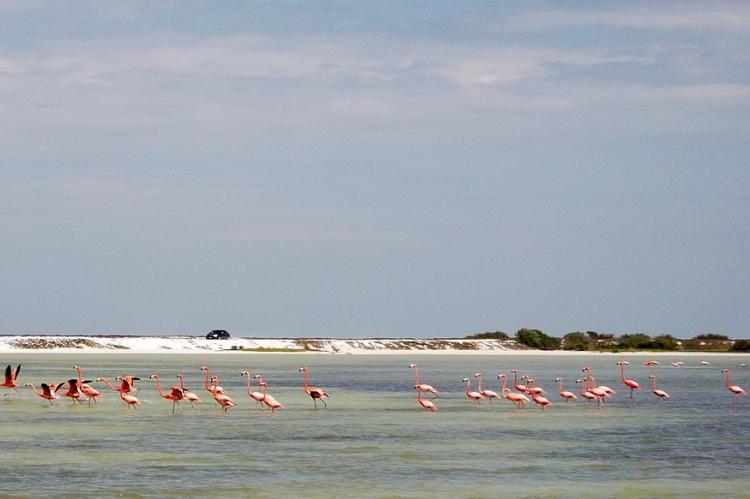The Ría Lagartos Biosphere Reserve: A Ramsar Wetland of Remarkable Biodiversity
The Ría Lagartos Biosphere Reserve, situated at the eastern end of Mexico's Yucatán, is a remarkable wetland ecosystem. This vast protected area encompasses diverse landscapes and habitats, serving as a vital sanctuary for numerous endangered species and a stopover for migratory birds.
The Ría Lagartos Biosphere Reserve: A Ramsar Wetland of Remarkable Biodiversity
The Ría Lagartos Biosphere Reserve, situated at the eastern end of Mexico's Yucatán Peninsula, is a remarkable wetland ecosystem recognized by the Ramsar Convention for its exceptional ecological significance. This vast protected area encompasses diverse landscapes and habitats, serving as a vital sanctuary for numerous endangered species and a crucial stopover for migratory birds.
Overview and Geography
With a total surface area of 60,348 hectares (149,100 acres), the Ría Lagartos Biosphere Reserve comprises a core area of 23,681 hectares (58,500 acres) surrounded by buffer zones spanning 36,666 hectares (90,600 acres). This expansive reserve harbors a mosaic of ecosystems, including mangroves, small estuaries, semi-evergreen forests, low deciduous forests, coastal dune vegetation, coastal lagoons, marshes (locally known as "petenes"), and savannas.
Ecosystems and Habitats
Savanna and Wetlands
The savanna ecosystem within the reserve is characterized by grasslands and reed beds, which serve as crucial nesting sites for marshland and sea birds. These wetland habitats are of paramount importance for the conservation of numerous species.
Mangroves and Coastal Environments
The reserve's mangrove forests, estuaries, and coastal lagoons provide vital habitats for a diverse array of marine and terrestrial life, including endangered sea turtles and migratory shorebirds.
Biodiversity Highlights
Flamingos and Sea Turtles
The Ría Lagartos Biosphere Reserve is a sanctuary of global significance for several endangered species. Its marshes are the only nesting site for the Caribbean pink flamingo (Phoenicopterus ruber ruber) in Mexico, and they also serve as an important nesting ground for critically endangered sea turtles, such as the Hawksbill (Eretmochelys imbricata) and the green sea turtle (Chelonia mydas).
Migratory Birds
The reserve's wetlands are a crucial resting and overwintering site for numerous migratory bird species, including the black-necked stilt (Himantopus mexicanus), which spends its winters in the region.
Conservation Challenges
Despite its protected status, the Ría Lagartos Biosphere Reserve faces several threats from human activities and natural disasters. Agricultural practices, livestock grazing, and the traditional "milpa" (slash-and-burn) farming technique have destroyed vast vegetation areas. Additionally, hurricanes and subsequent forest fires have significantly impacted the reserve's ecosystems.
Sustainable Development and Ecotourism
In recent years, the reserve has experienced a 300% increase in tourism services, including hotels, restaurants, and handicraft production. This surge in ecotourism activities has been primarily driven by the reserve's unique attractions, such as the Caribbean flamingo population and sea turtle nesting sites.
Efforts are underway to balance conserving the reserve's natural resources with sustainable development practices. Traditional fishing and salt mining activities are gradually adjusted to align with sustainable practices. In contrast, minimal agricultural activities, such as the production of corn, beans, pumpkins, and peppers, continue to be practiced using traditional techniques.
